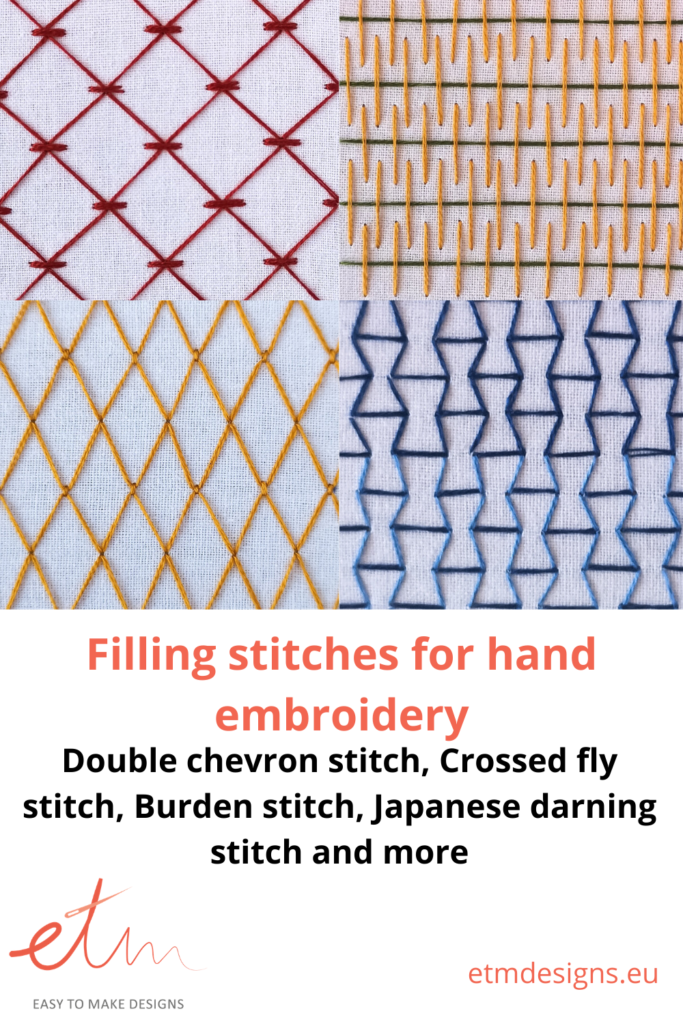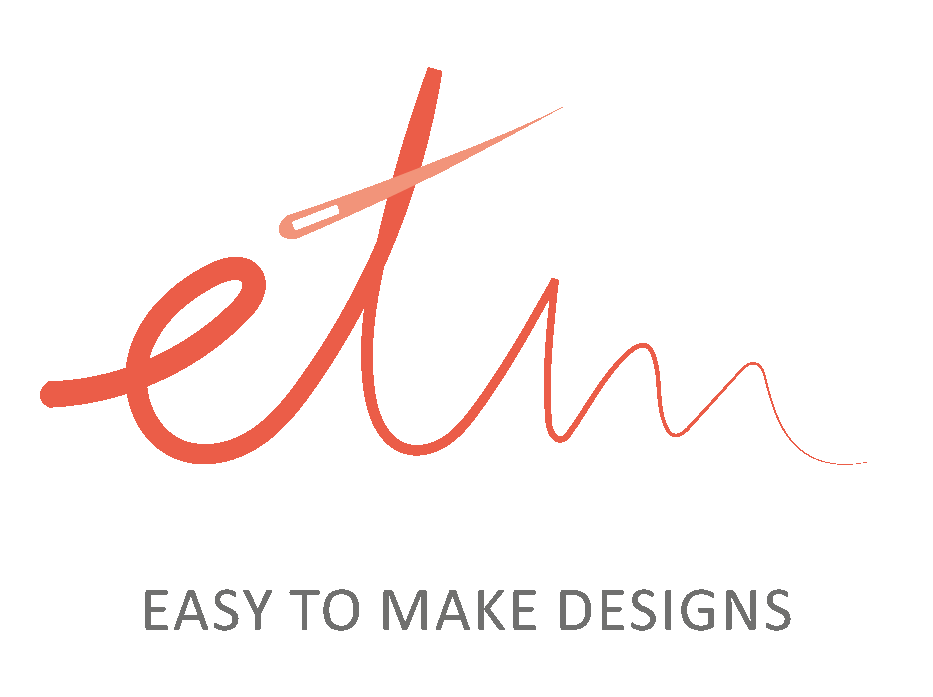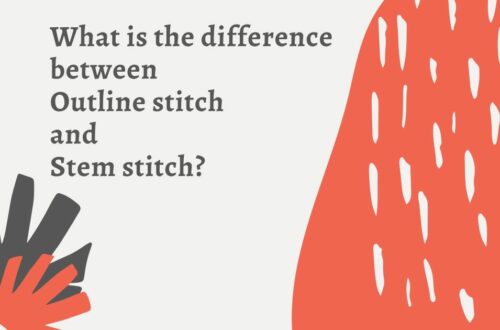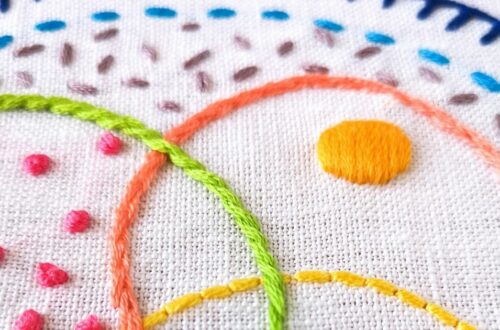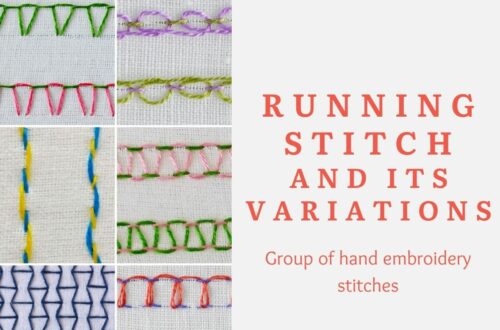
Hand embroidery Filling stitches 2
Hand embroidery stitches for filling areas
Filling stitch is a term for surface stitches that are used to fill in specific parts of a design or the area around a design. Part of the filling stitches will cover the fabric thoroughly, others will show a bit of the background fabric, and some will only put small accents to the surface. In the first article, “Filling stitches – Part 1”, I wrote about: Satin stitch, Otomi stitch, Couching stitch filling, French knot, Seed stitch, Long and short stitch, Weave stitch (weaving stitch), Chain stitch filling, Blanket stitch filling, and Honeycomb filling.
But there are many more filling stitches that you can use in your hand embroidery. Let’s add some more filling stitches to our list:
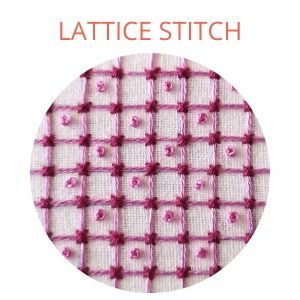
Lattice stitch
Lattice stitch or Lattice work is a very versatile and fun stitch that is used for filling significant areas in hand embroidery. This technique comes from Crewel embroidery and is widely used there.
There are many ways to make this stitch. You can make this stitch on blank areas or embroider it over areas already filled with satin stitch.
In the video tutorial in my blog, you will see a basic lattice stitch embellished with french knots. The skeleton of this stitch is made with vertical and horizontal lines, forming a grid. Then, you make a couching on the intersections of the base threads and add some french knots in the empty squares.
Look at a video tutorial and see how fun and easy Lattice stitch is!
Chevron stitch filling
A Chevron stitch is worked on 2 horizontal lines and creates a zig-zag shape between them. This is an exciting stitch that can be used for fillings. It uses parallel rows of chevron stitches and adds beautiful texture to the filled shape. This stitch allows you to experiment widely with colors and patterns. You can use a different color for each row of the chevron stitch. Also, you can change the position of the stitches in every second row to create a totally different pattern. Besides that, chevron stitch can be worked in curved shapes as well as straight lines.
Watch a video tutorial and learn to fill areas with Chevron stitch!
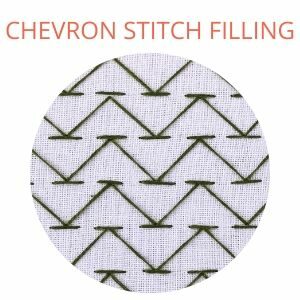
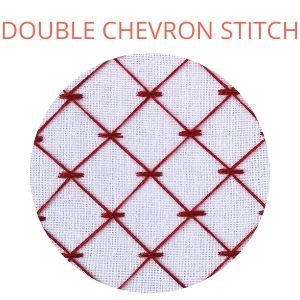
Double Chevron stitch filling
This filling stitch is very similar to a regular chevron stitch filling. The only difference – the placing of the stitches in the second row. The second row of the chevron stitches is placed so that the leg of the stitch – short horizontal stitch – is placed right above the leg of the first row. This placing creates a beautiful net-like pattern.
Look at this video tutorial and learn Double Chevron stitch!
Half Chevron stitch filling
Half Chevron stitch is an exciting variety of Chevron stitch with one side of the stitch being worked with a similar hand motion. It makes a useful border or outline stitch, which follows curves well. You can accomplish this stitch back to back with the points facing or make lines (like in my example) for filling. Also, you can stack this overlapping stitch row upon row to create a more patterned filling stitch.
Watch a video lesson of Half Chevron stitch and learn how to make filling with it.
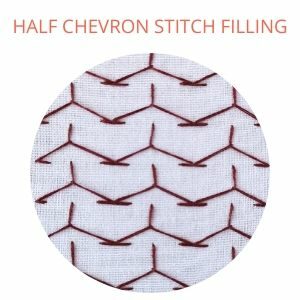
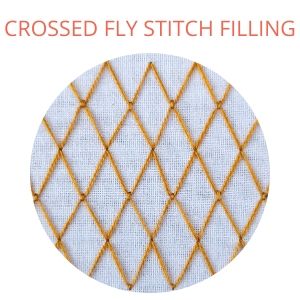
Crossed Fly stitch filling
This stitch is done using rows of horizontal fly stitches with short tales, one above the other to fill an area. It creates a beautiful net-like pattern that could look like a trellis stitch in a single color.
Look at the video tutorial of Crossed Fly stitch and learn this simple filling stitch!
Trellis stitch
Trellis stitch or Trellis work is handy as a filler stitch, as it can cover a large area of fabric in a short time. It is used widely in crewel embroidery.
In this example, I show you how to embroider a simple, base Trellis stitch. After you make that, it can be decorated with french knots or lazy daisy stitches.
Watch a video lesson of Trellis stitch to learn this embroidery!

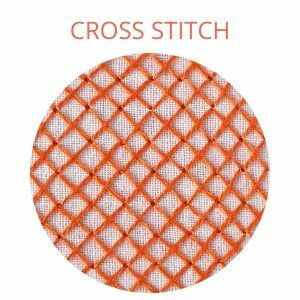
Cross stitch
Cross stitch is a popular form of counted thread embroidery in which X-shaped stitches in a tiled, raster-like pattern are used to form a picture. In modern hand embroidery, the Cross stitch can be used to make separate cross stitches or to fill the areas.
Cross stitch embroidery can be made in different ways. The Danish style is used to make rows of cross stitch and traditional stitch to make isolated cross stitch. In my tutorial, I show you how to make cross stitch filling in Danish style.
Keep in mind that to make a beautiful and even cross stitch filling, you will need a grid of even squares. If your fabric is not loose weaved, draw a grid before starting embroidery. Use water-soluble or heat erasable pen to be sure that the grid will be easy to cancel after you finish the embroidery.
Watch a video tutorial of Cross stitch here.
Stem stitch filling
The Stem stitch makes a rope-like line. How heavy the rope depends upon the thread you use. Stem stitch can be very delicate and can be used on the most delicate embroidery pieces. Or it can be bold. This stitch is handy if you need to embroider curves, waves, or little circles. As the name of the stitch suggests, it’s widely used to embroider leaves and stems of the plants. Also, stem stitch can be used to fill an area, by working rows of stem stitch close together.
Watch a video lesson of Stem stitch filling and learn how to fill areas with it.
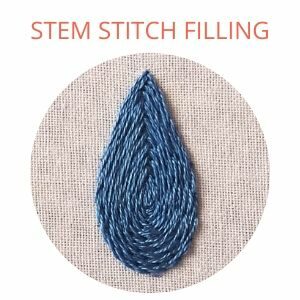
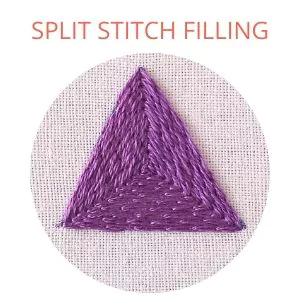
Split stitch filling
The Split stitch is a perfect choice for any pattern that involves outlining. Dense lines of this stitch are used like filling stitch. Split stitch can be made in two different ways – as regular split stitch and as a back split stitch. I prefer a traditional split stitch as it uses up less thread.
Watch a video of Split stitch filling and learn how to fill in areas and make angles with split stitch.
Burden stitch
Burden Stitch was born in the middle ages. It is used to cover large areas in an embroidery piece and gives a woven effect to the fabric. Burden stitch is a couching stitch because the laid horizontal threads are couched down with straight vertical stitches. This stitch provides you the possibility to play around with the colors as different combinations of colors of horizontal and vertical stitches will create beautiful patterns. Also, you can make this stitch dense of loose and create a beautiful texture in your embroidery.
Watch the video tutorial of Burden stitch to see how this stitch is made.
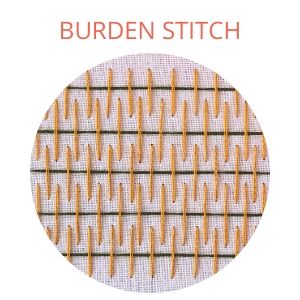
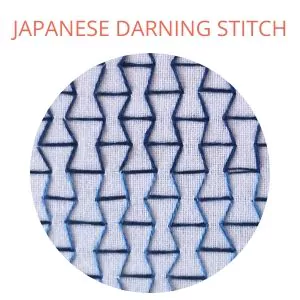
Japanese darning stitch
Japanese darning stitch belongs to the family of running stitches. In this stitch, two parallel lines of running stitches are connected with diagonal stitches. Traditionally it is used for darning in sashiko and boro embroidery. In modern embroidery, a Japanese darning stitch can be used to fill significant areas and creates a beautiful geometrical pattern. You can make this stitch in one color or add colors to your embroidery, choosing different color threads for horizontal and vertical stitches.
Watch a video tutorial and learn how to make Japanese darning stitch!
Want to learn hand embroidery stitches with my embroidery tutorials? Check out my YouTube channel or go to Video tutorials and choose the stitch you want to learn from an alphabetical list.
Interested to learn more filling stitches? Read the article “Hand embroidery Filling stitches – part 1” in my blog.
